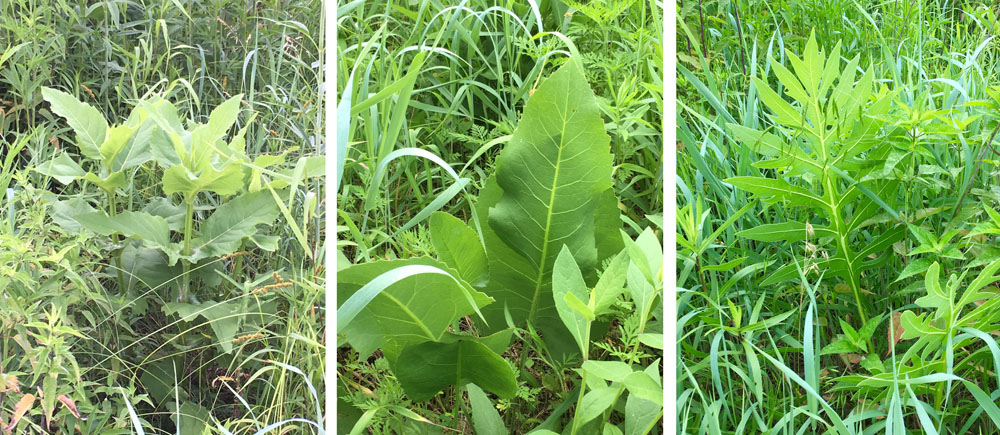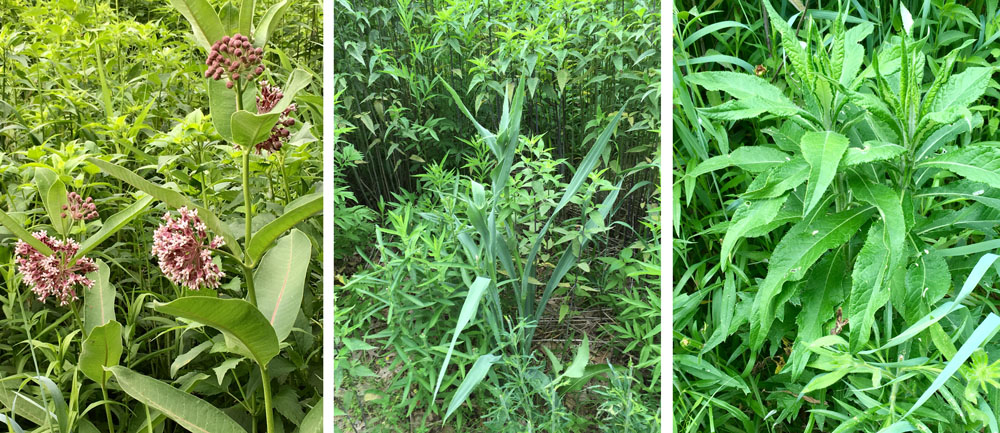CANS Prairie Update
by John Beser
– by John Besser, CAS President.
Yesterday, I paid a visit to the 15-acre prairie restoration project at the Columbia Audubon Nature Sanctuary, off Bray Avenue in West Columbia. I think this is the fourth growing season for this project, and each year we see new plants reaching maturity.
Three of the “new” species are members of the genus Silphium. They all bloom in late summer, with tall flower stalks topped with yellow sunflower-like blooms, but it is the leaves of these plants that makes them each distinctive. Cup Plant has large irregular leaves that join around the stem to form small “cups” that capture rainwater (Why? I don’t know). Prairie Dock has large oval leaves at its base that are the size of the blade on a canoe paddle. My favorite of the Silphiums is Compass Plant. Its basal leaves are deeply cut into elaborate jagged shapes. This plant get its name because the leaves stand vertically and line up on a north-south plane (Why? Another mystery.)
Another important group that’s showing up in good numbers this year are the milkweeds, which are host plants for the Monarch caterpillar. The plants I saw yesterday had leaves that varied from oval to almost lance-shaped, and I think these are Common Milkweed and Purple Milkweed, respectively. Some of the common milkweeds are already in flower, and some plants had already been chewed on extensively, but I couldn’t find any caterpillars.
I also noted several other species that have not been very abundant in previous years. Rattlesnake Master has an interesting name and a distinctive appearance. It has stiff, yucca-like leaves and a flower stalk topped with spiky white ball-shaped flowers. I also noticed some native thistles. Although there are some non-native thistles in the prairie, the native species tend to have long lance-shaped leaves with slightly serrated edges and a distinctive white surface on the underside of the leaves.
I hope you will have a chance to enjoy the diversity of our prairie. Although the tall prairie vegetation is pretty impenetrable, you can easily see most of the wildflowers by walking along the Scott’s Branch Trail or the mowed trails that run east and west from the trailhead at the parking area at the north end of Cunningham Road.


